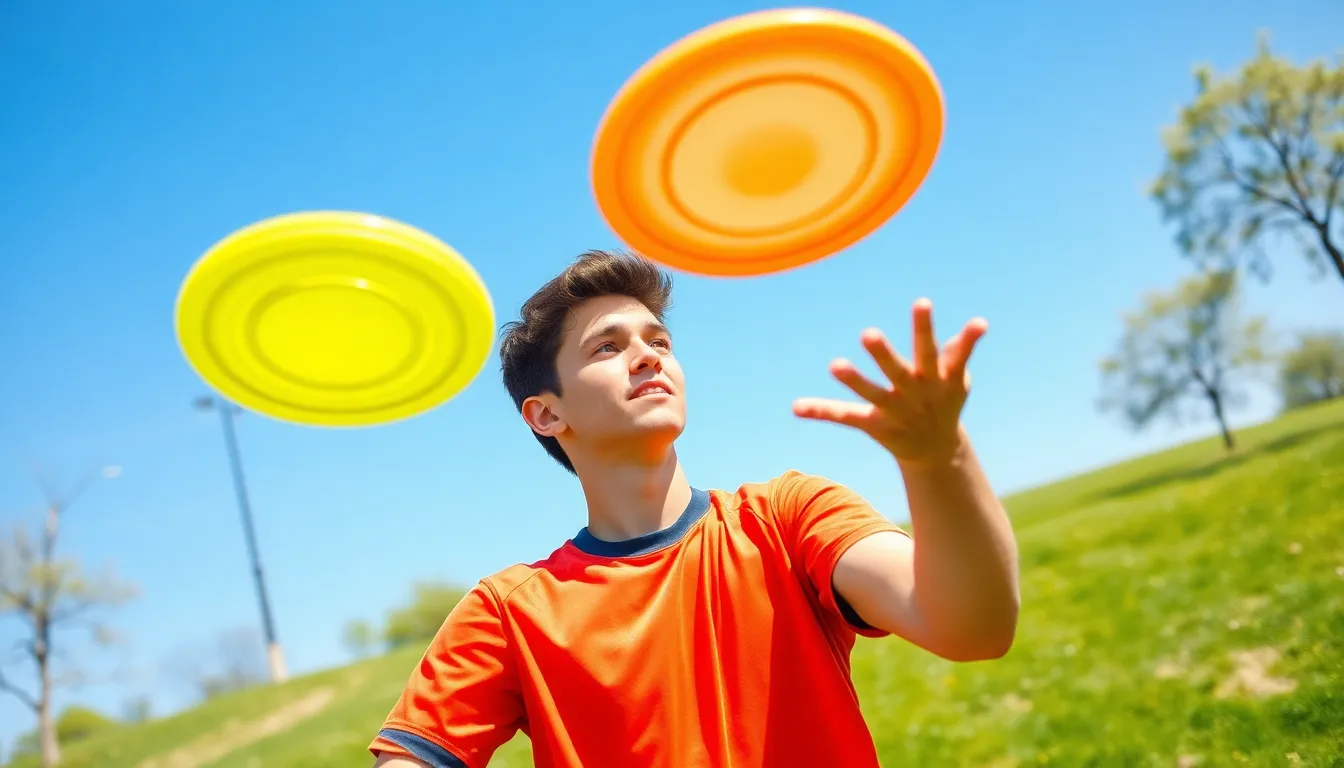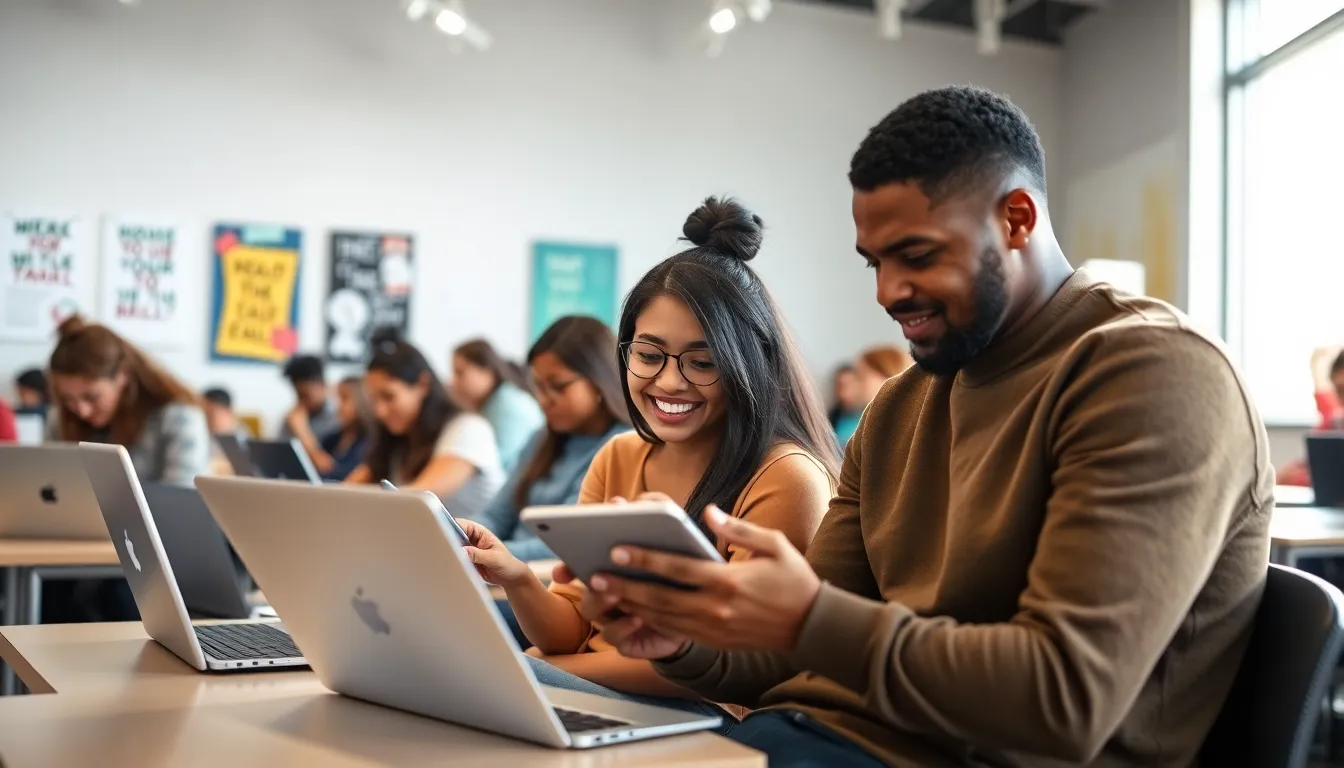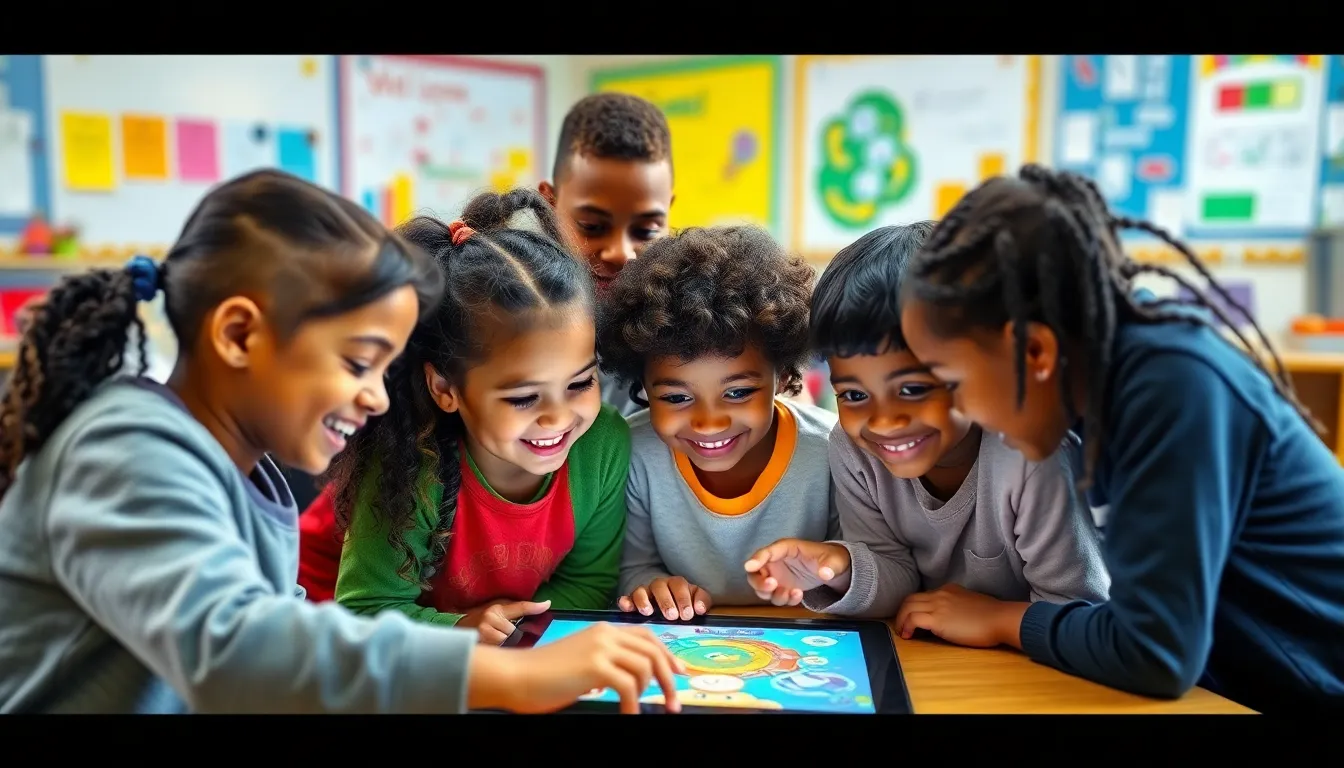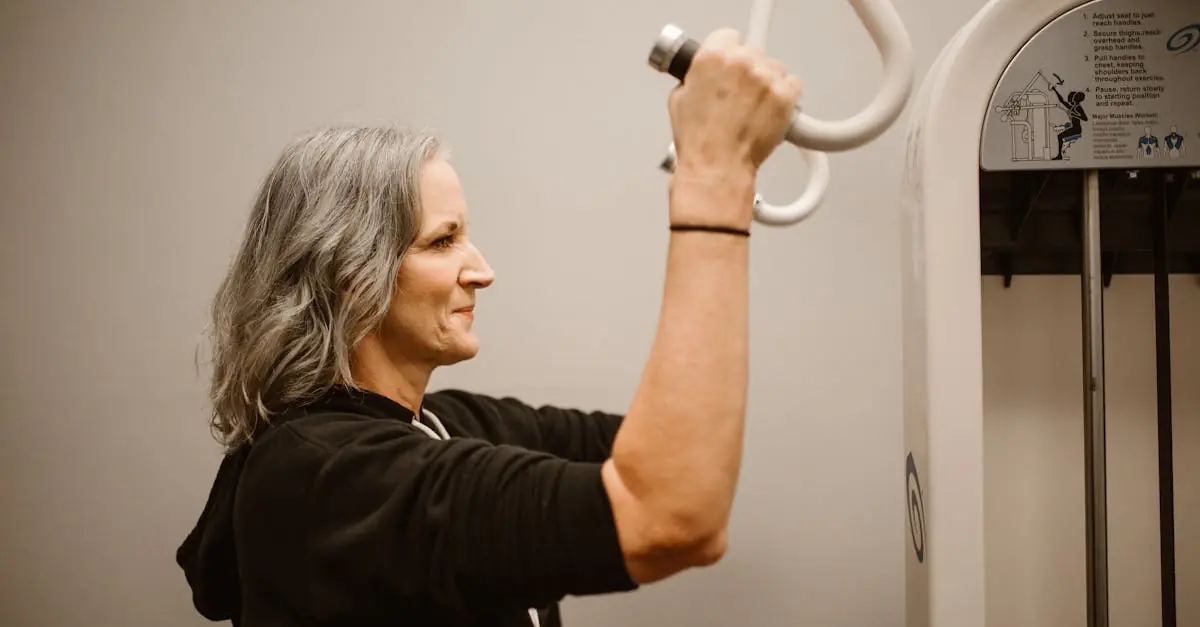Table of Contents
ToggleHand-eye coordination is like the unsung hero of everyday life. It’s the secret sauce behind catching a flying frisbee or nailing that perfect shot in a video game. Without it, even the simplest tasks could turn into slapstick comedy routines. Imagine trying to drink coffee while dodging a rogue spoon—yikes!
Understanding Hand-Eye Coordination
Hand-eye coordination is a vital skill that influences numerous everyday activities. This ability involves the brain’s synchronization of visual input with hand movements, allowing for precise actions.
Definition and Importance
Hand-eye coordination refers to the coordination between visual perception and hand movement execution. It plays a crucial role in diverse activities such as sports, driving, and performing tasks that require dexterity. Improved coordination enhances one’s ability to catch objects, complete fine motor tasks, and engage in activities that demand precise timing and accuracy. Many studies link strong hand-eye coordination to better academic performance, particularly in subjects like math and science, where spatial awareness is key.
Development Through the Ages
Development of hand-eye coordination begins in infancy. Infants start by tracking objects with their eyes and gradually learn to reach for them. During childhood, activities like throwing balls, riding bikes, and playing video games further refine this skill. By adolescence, more complex activities such as sports or musical instruments showcase advanced coordination abilities. Continuing practice throughout adulthood helps maintain and improve this essential skill. Various exercises, including playing catch or participating in sports, contribute to ongoing development and agility.
Factors Affecting Hand-Eye Coordination
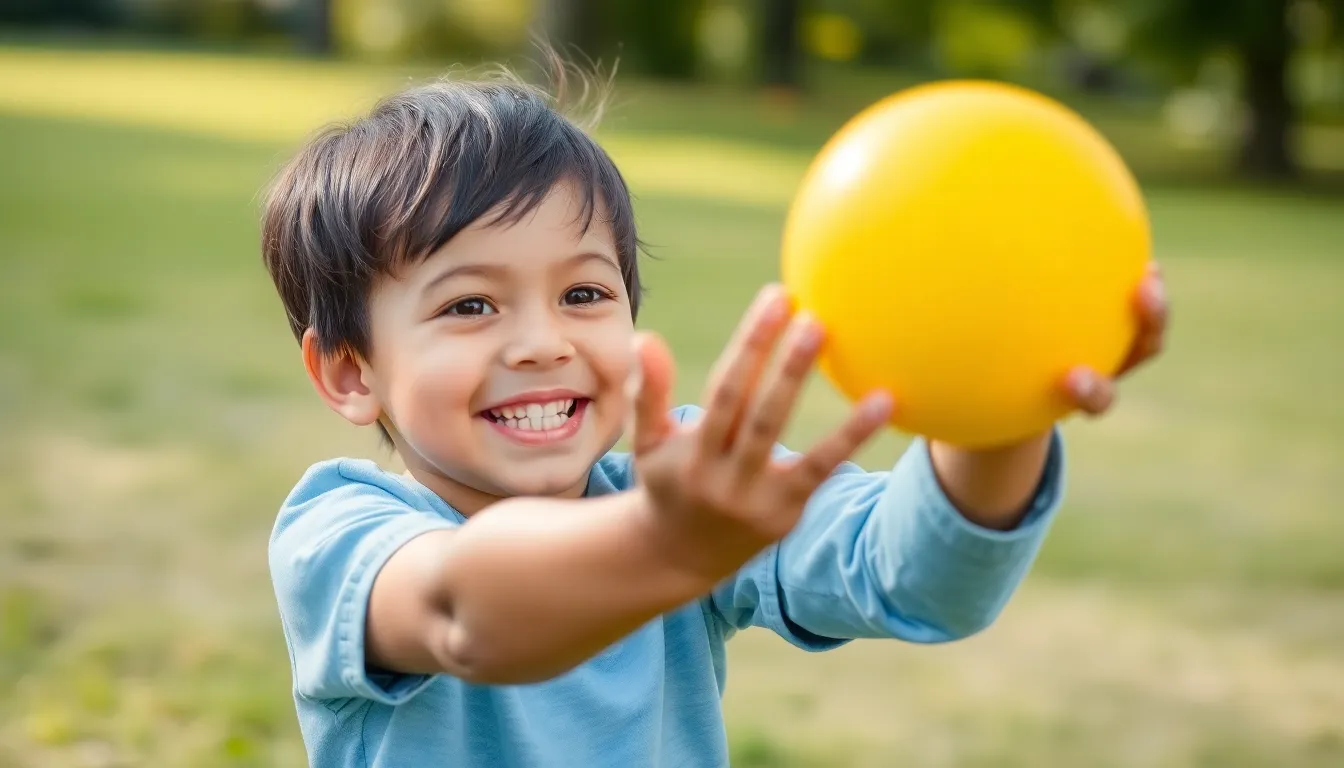
Multiple elements impact hand-eye coordination, influencing its development and efficiency.
Genetics and Physical Ability
Genetic factors play a significant role in determining coordination capabilities. Specific genes influence muscle composition, reflex speed, and visual perception. Additionally, physical abilities such as strength, flexibility, and overall fitness directly affect coordination skills. Individuals with a background in athletics might naturally display better hand-eye coordination due to innate physical advantages. A study from the Journal of Sports Sciences indicates that genetic predisposition can enhance reaction times and spatial awareness. Ultimately, genetics and physical attributes create a foundation for hand-eye coordination abilities.
Environmental Influences
Environmental factors shape hand-eye coordination throughout life. Daily activities, educational opportunities, and available resources drastically influence skill development. For instance, children exposed to sports and interactive play display improved coordination compared to those without such experiences. Engaging in varied activities, like playing musical instruments or participating in arts and crafts, further enhances coordination skills. Research from the American Journal of Occupational Therapy shows that environments rich in sensory experiences promote better integration of visual and motor skills. These influences collectively contribute to the proficiency of hand-eye coordination in various tasks.
Methods to Improve Hand-Eye Coordination
Improving hand-eye coordination involves a variety of exercises and tools. Engaging in specific activities enhances both skill and performance.
Exercises and Activities
Ball games, such as basketball and tennis, boost coordination. Activities like juggling and playing catch refine timing and skill. Practicing target shooting, whether with a bow, gun, or darts, sharpens precision. Incorporating hand-eye coordination games, like playing video games that require quick reflexes, sharpens response times. Simple drills, such as tossing a ball against a wall and catching it, strengthen reflexes. Regular practice helps develop gradual improvement over time.
Technological Aids and Tools
Wearable devices, like smart glasses, provide real-time feedback on visual alignment. Apps designed for hand-eye coordination focus on drills and provide practice routines. Simulation games mimic real-life challenges, enhancing spatial awareness. Virtual reality platforms offer immersive experiences for practicing coordination in various scenarios. Additionally, specialized software targets enhancement of visual skills, promoting better integration of visual information. These technological tools make improving hand-eye coordination accessible and engaging.
Hand-Eye Coordination in Various Sports
Hand-eye coordination significantly influences athletic performance across numerous sports. Athletes rely on precise coordination for accuracy and efficiency, enhancing their overall gameplay. In sports like baseball and tennis, the ability to swiftly track a moving object while maintaining control over one’s body is crucial for successful execution of plays. Statistics show that athletes with superior coordination outperform their peers in both reaction times and precision.
Impact on Performance
Improved hand-eye coordination boosts performance in various competitive settings. Players with refined coordination often display quicker reflexes and enhanced accuracy during critical moments. For instance, a basketball player relies on this skill to catch passes and shoot accurately. Research indicates that athletes demonstrating strong coordination can increase their chances of scoring by nearly 20 percent. Training programs focused on these skills elevate players’ performance through consistent practice and specialized drills.
Sport-Specific Techniques
Sport-specific techniques enhance hand-eye coordination tailored to each discipline. In tennis, athletes develop their skills through repetitive drills involving ball tosses and volleying. Baseball players often practice hitting by seeing the ball against a bat, refining their accuracy. Fencing athletes combine rapid footwork with precise hand movements to score points. These targeted exercises solidify coordination within the context of each sport, ultimately leading to improved overall performance. Incorporating sport-specific drills into training routines fosters an environment conducive to skill development.
Hand-eye coordination is a cornerstone of effective interaction with the world. Its impact spans from everyday tasks to athletic performance, underscoring its significance in both personal and professional realms. By engaging in activities that challenge and develop this skill, individuals can enhance their abilities and improve their overall quality of life.
Investing time in practice and utilizing various techniques can lead to noticeable improvements. Whether through sports, arts, or technology-driven exercises, the journey to better hand-eye coordination is both rewarding and essential. Prioritizing this skill not only boosts physical performance but also enriches mental acuity, making it a vital focus for anyone looking to excel in their pursuits.

